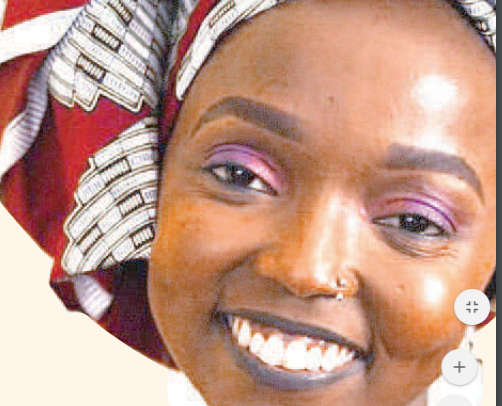I was diagnosed with arthritis at 10

Kanana Kajuju, a flourishing interior designer remembers being diagnosed with rheumatoid arthritis in 2000. She was only 10.
“There was a lot of pain in most of my joints; fingers, wrists, knees and hips. I also had dry skin, which manifested as a rash on my face. We did not know exactly what I was suffering from, as no one else in my family suffers from the condition,” she starts.
“The doctor told me there was no cause for alarm and put me on medication with regular checkups to ascertain progress. We managed it through medication, healthy eating and regular exercise, and I was in remission for around six, seven years before it flared up again. For me, the cold seasons and at times diet trigger the pain,” Kanana explains.
Rheumatoid arthritis is an autoimmune disease that can cause joint pain and damage throughout the body. While in Kanana’s case there was no genetics interlink to explain incidence, many rheumatologists say that rheumatoid arthritis is brought about by multiple factors rather than one, which include age, gender, smoking and genetics.
“Rheumatoid arthritis affects adults of any age, although most people are diagnosed between the ages of 40 and 60. Around three-quarters of people with rheumatoid arthritis are of working age when they are first diagnosed. It is also two to three times more common among women than men.
It develops because of a combination of genetic and environmental factors, with smoking significantly increasing this risk. If you have a genetic predisposition to rheumatoid arthritis, it means you have an increased likelihood of developing the condition based on your genetic makeup.
It is unclear what the genetic link is, but it is thought that having a relative with the condition increases your chance of developing it by between one and seven per cent,” elaborates Dr Eugene Kalman, a rheumatologist lecturer at the University of Nairobi and founder and practitioner at Liberty Arthritis Clinic.
He adds that the main symptoms of rheumatoid arthritis include joint pain, joint swelling, warmth and redness around joints associated with stiffness, especially first thing in the morning or after sitting still for a long time.
“This is usually in the background of longterm symptoms of tiredness and lack of energy or fatigue, not feeling hungry, weight loss, a high temperature, or a fever and sweating. It can affect other parts of the body with the chest, eyes and mouth most commonly affected.
For example, rheumatoid arthritis can affect the chest where it can lead to coughs, difficulty in breathing; can affect the eyes and mouth leading to dryness as patient complains of excess drinking of water or dry gritty feeling in the eyes,” the consultant physician adds.
There are no studies on the exact number of people suffering from rheumatoid arthritis in the country. However, the first case was reported in 1962.
Due to increased awareness amongst healthcare practitioners and more access to information by the masses, numbers of those diagnosed with the condition have increased over time. Research at the rheumatology clinics at Kenyatta National Hospital have found its diagnosis to be predominantly in women, with a nine to one ratio to men.
Globally, according to the World Health Organisation (WHO), the prevalence varies between 0.3 per cent and one per cent and is more common in women and in developed countries.
Within 10 years on onset, at least 50 per cent of patients in developed countries are unable to hold down a full-time job. Differentiating difficulties It could be difficult to differentiate rheumatoid arthritis from the other types of arthritis, but it is doable, Dr Eugene says.
Joint pain is usually divided into inflammatory and non-inflammatory types with rheumatoid arthritis falling under first category. Inflammatory arthritis is where joint pain and stiffness are usually worse in the morning or after prolonged rest, but gets better with activity, whereas osteoarthritis, which is noninflammatory, the pain is worse with activity and gets better with rest.
Other pointers towards rheumatoid arthritis is number of joints affected as it attacks joints on both sides (symmetrical) of the body in particular the small ones such as hands, wrists and toes whereas osteoarthritis and gout normally affect just one joint and on only one side of the body. Kanana feels extremely lucky to have the condition diagnosed early on and to be managing it, even with the occasional flare-ups.
“There are people who have it worse, so I do not stop to give myself a pity party and instead do my best to live to my fullest and lead a productive life. I thank my doctor and my family for standing with me and ensuring that I know that rheumatoid arthritis is not the end of life, and that it should not wholly define your life,” Kanana emotes.
Dr Eugene emphasises the importance of getting an early diagnosis to check the disease, as any damage it does to joints is permanent. Studies indicate that about 60 per.










